One of the most-read articles from my coverage of EAA AirVenture Oshkosh 2022 was the news that FAA missed their deadline as originally projected and will be a year or more late with the Mosaic rule. Many were upset at that result; others thought it was “par for the course.”
 The good news, as I reported in the article, is that what emerges in one year will be a regulation that might actually go forward. Let me explain a little more fully.
The good news, as I reported in the article, is that what emerges in one year will be a regulation that might actually go forward. Let me explain a little more fully.
During Oshkosh 2022, I attended three meetings where FAA spoke. I also had one-on-one discussions with several knowledgeable people. What follows is a fusion of all those conversations. While I believe this information to be accurate, the situation is changing and more questions will arise. Please consider this a snapshot in time.
 The Main Question — As some commenters to the earlier article said, FAA did specify a date when the Mosaic NPRM may be released: “August 2023.” This came directly from David Boulter who was selected by the FAA Administrator to answer an audience question; the comment was made in a public forum. Insiders with whom I spoke said his date may be optimistic, so “a year or more” is likely the best response.
The Main Question — As some commenters to the earlier article said, FAA did specify a date when the Mosaic NPRM may be released: “August 2023.” This came directly from David Boulter who was selected by the FAA Administrator to answer an audience question; the comment was made in a public forum. Insiders with whom I spoke said his date may be optimistic, so “a year or more” is likely the best response.
The Big Split
What many have not understood is that the original Mosaic was one big ball of regulation. We are focused only on the parts that apply to us and that is perfectly normal. However, Mosaic touches on a wide range of aircraft from warbirds to drones… and us.
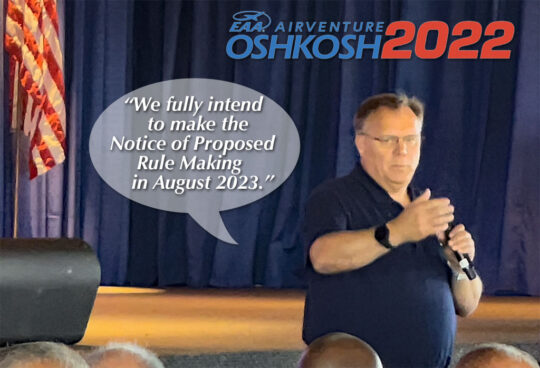 Remember, this started during the Trump administration when the directive to federal agencies was essentially, “If you want a new regulation, get rid of two first.”
Remember, this started during the Trump administration when the directive to federal agencies was essentially, “If you want a new regulation, get rid of two first.”
When Congress granted FAA their budget request almost five years ago, it came with strings attached. FAA was to incorporate into the airspace vehicles I’ll call multicopters and drones (yes, I know other names are used). By multicopters I mainly mean manned or crewed aircraft where by drones I mainly mean autonomously flown, no human pilot on board. This distinction is important relative to FAA’s delay announcement at Oshkosh 2022.
As recent controversy about Beyond Visual Line of Sight flight (BVLOS) shows, FAA’s task of incorporating these new flying machines into the U.S. airspace is not easy. Lots of diverse opinions have been offered. Some arguments were raised by extremely wealthy corporations that have many millions to spend on lawyers and lobbyists.
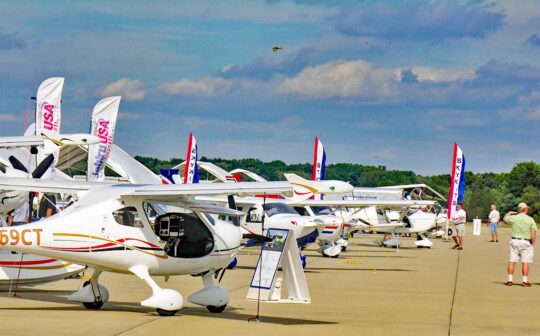
Special — as opposed to Standard category, type certificated aircraft — are the other half of the Mosaic puzzle. Those eVTOLs or multicopters, or tilt-wings that have a human pilot on board are less difficult to incorporate. As industry expert Roy Beisswenger recently wrote to FAA (about BVLOS), “when pilots are on board, they have skin in the game,” literally. A drone, even if live-remotely-piloted, has no skin in the game. That’s an enormous difference.
FAA faced the facts and made a decision. They needed to split uncrewed aircraft from crewed aircraft. If they did not separate them, the difficulty in devising good rules for drones would hold back their ability to move forward with Mosaic as applied to crewed Special airworthiness aircraft… us.
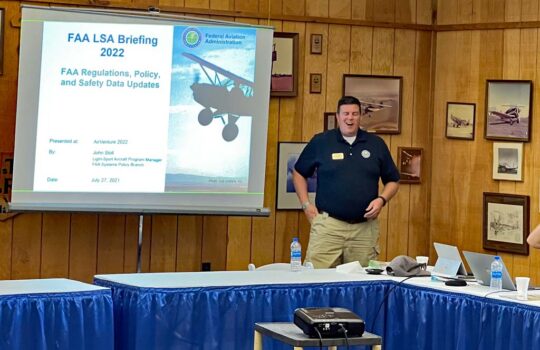
LSA program manager John Stoll briefed manufacturers and other interested persons. John is a pilot and a homebuilder, so he understands the recreational flying community.
So, a year’s delay or more stinks but at least our part of Mosaic — with its coming benefits to pilots and manufacturers — can get completed. Yes, it will take FAA time to separate the two in their internal planning and rule writing but I’ll bet the ASTM group will swiftly adapt. A great deal of the needed standards are complete and any necessary changes will be made swiftly — if enough people help. Remember, the ASTM F37 LSA committee is basically a volunteer group. You can join and help, and get a vote in how things work. It’s very democratic. FAA sits on the committee, too, but the whole of the agency gets only one vote, the same as you. Interested parties, please go to ASTM’s F37 website.
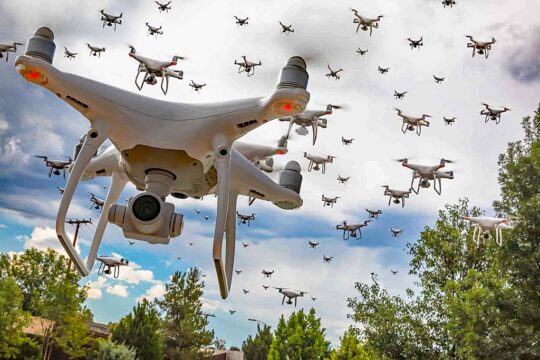
More privileges will be given to pilots and manufacturers, but that means those groups must stand up and take responsibility for more tasks.
More good news
One of the most common questions I have been asked is basically this:, “I have a Sport Pilot certificate or I am using my Private or better to use the benefits of Sport Pilot (namely, the driver’s license medical). Will I able to fly a fill-in-the-blank legacy GA airplane?”
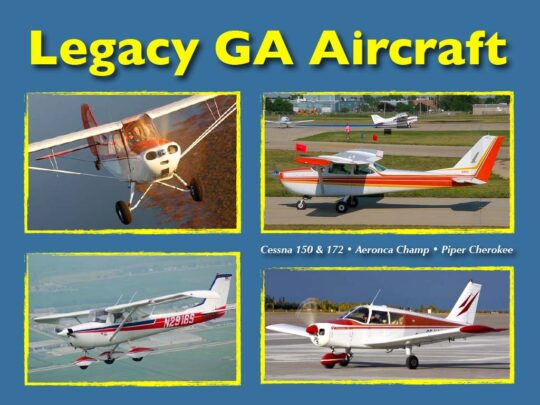
The Short Answer from FAA — Privileges for Sport Pilots are likely to increase as well. More than one FAA official stated this at Oshkosh 2022.
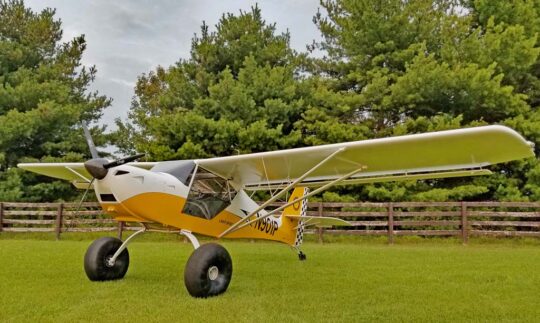
So, we will get our larger, faster, more capable LSA, which will cost more. Yet existing LSA meeting today’s parameters can continue without interruption. Some of these are quite affordable and don’t need to become bigger or faster to accomplish their mission. Thus, we keep what we have and we get new, more functional aircraft …a kind of eat your cake and keep it, too proposition.
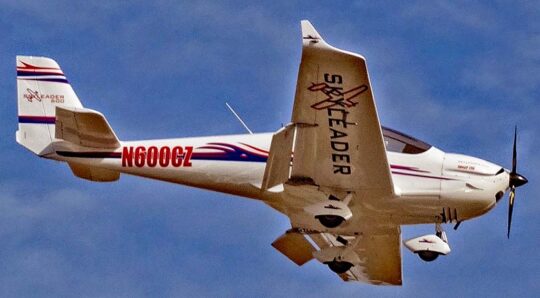
It’s all good — except for the wait that just got longer. At this time, I don’t see any new-style LSA on the market before about spring 2025.
My Advice — Go buy and fly a present-day LSA. You can always sell it later and buy your new dream machine. You have 157 model choices today, some quite affordable, with a growing number of used, reduced-price LSA — and you do not need to wait long to purchase one. Go! Fly! Now!


Can the application of an approved STOL kit achieve the required clean stall or VGs?
If an “approved” STOL kit provided an update to the POH with new, lower stall speeds, yes. Without an officially amended POH, how do you prove to FAA that stall was reduced? It’s probably easier to urge FAA to bump the clean stall to 56 or more.
Thank you Dan,
Good information to know. Cessna stall charts read forward and aft CG in IAS and CAS. 1980 Cessna 182RG has a rear CG of 54 CAS. But the forward breaks to 54 CAS.
What plane can do 250 knots and Stall Clean at 54 knots? A Unicorn, lol.
Highest regards,
Gary Jones
Regarding your unicorn — Note that the whole point of this clean stall number is to constrain the size of the aircraft not create an impossible design challenge. I don’t see any aircraft hitting 250 knots cruise with a 54-knot clean stall… but I’ve learned not to underestimate an ambitious designer.
What is likely to happen with ELSA? I own a nice but slow ELSA Czech Sport Cruiser w/max gwt 1320/138 Mph vne, 912ULS
IF the airframe would handle it is it likely that I could increase these these limitations with larger engine, constant speed prop, etc??
TBoone In Texas 0TX1
Most likely you will need manufacturer support to prove the structure can handle higher weights and different equipment, unless YOU have information that proves your ELSA’s structure can handle more.
I’m already a Private Pilot was just wondering, when it goes into affect will it eliminate me from having to get a medical and just use my drivers license? I have a Cherokee 140 flying with basic med.
From what we have heard so far, I would say, yes, that’s a good possibility.
Trying to find a ultralight. How is the mosaic rule going to find a airplane I can fly aviation in in my family?
Mosaic designs are one end of the spectrum. They will fly your family. Ultralights are at the other end of the spectrum. They are single seat only and cannot “fly your family.”
Did you see this recent article? You might want to attend the free webinar on ultralights coming up February 22nd (2023) at 7 PM Central U.S.
When this is all worked out will a Sport Pilot be able fly a certificated airplane like the Cherokee 140 or Cessna 150 without a medical and just use their drivers license?
The article answers that question and this video goes into it more deeply, but…
…YES, it appears very likely you may get what you want.
I assume, though, that we’re still talking 2 occupants maximum as the likely scenario, right?
Probably, yes.
Hi Dan,
Thanks for the great update. I just joined ASTM/CommF37. Good recommendation.
Jeff
Thanks Dan, you’re the best!!!
I watched the video about avgas from Avweb and wanted to post something about it, but I am banned from 4chan and had lots of troubles with different platforms.
E85 gasoline can be used in high altitudes with the addition of an anti-freezing agent such as HEET, I don’t know which issues it could cause compared to avgas and its alternatives (corrosion is an usual problem).
(I also have a gmail with the same username but it may not be working)
Dan, that’s a good point in inviting more people to join the ASTM F37 LSA committee! If the stakeholders want something done, the ASTM environment will be the answer. It’s time to roll up our sleeves and get busy.
Dear Dan, thanks for this update! Even for us who live overseas, it’s important to know what is going on in the greatest LSA Market in the world.
As for the limitations on LSA performance, I would like to let you know that ANAC, the Brazilian CAA, has just approved an update to our Part 1 counterpart, the RBAC 01, which has expanded LSA limitations to the following numbers:
1) Up to four seats;
2) 3.000 lbs MTOW for normal aircraft and 3.350 lbs MTOW for amphibious;
3) Maximum 185 kts CAS cruise speed, provided simplified flutter analysis is included in the certification process;
4) Maximum 61 kts CAS Stall speed in landing configuration; and
5) Single engine, conventional or electric, with fixed, adjustable or variable pitch propellers.
We hope to have some 4 seaters ready for certification pretty soon!
Maybe it can be a solution to expedite the process with FAA!
Best of regards, from this side of the Equator!
I plan a report on other CAAs and their work to modernize as ANAC already did.
It’s important to mention that these results did not pop out of the blue.
During almost a year we have had weekly discussions with ANAC Airworthiness Certification Specialists and the industry, to analyze each and every paragraph of the related ASTM and the corresponding requirements of FAR Part 21 and 23, EASA related documents, F37 Group discussions, and our own RBAC 21 and 23.
We have compared the requirements of ASTM rules with standards already in use for larger aircraft, such as the ones prescribed by Part 23, and we ended up with a report comparing advantages and disadvantages os allowing the expansion on our LSA limitations.
After all this work, ANAC came up with a Regulatory Impact Analysis and a Public Consultation, in which we were able to round the edges of the proposed revision to our Part 1.
We went through almost two years of work and we followed closely the updates on FAA and ASTM F37 Group.
Our final conclusion was that ASTM regulations are already prepared to cope with most of the differences in certification procedures for larger aircraft, provided a simplified flutter analysis is made, for preventing high speed problems. Nevertheless, we could have increased the maximum speed to 230 knots CAS at sea level, but ANAC decided to be conservative on this matter.
I guess it is very simple and easy to implement solutions, which could strongly push the LSA Market all over the world. Not to mention that a similar decision from FAA would “open the gates” for CAAs all around the world to follow!
Best of regards, and keep up with the good work!
This is exactly where the U.S. standards should be heading. EAA, APOA, LAMA, and organizations of that ilk should be pushing for similar rules. There is power behind their numbers (not to mention dollars). To think that’s my personal comment after a NPRM comes out is going to sway the FAA in the slightest, is as someone else put it “ detached from reality”.
Thanks for this not unexpected update Dan. My sense is that the FAA is trying to do too much with MOSAIC now, and my concern is that it could all come crashing down after the NPRM comments are received and adjudicated by the FAA. I’m 63 and retiring soon, and was hoping to be able to fly an inexpensive Cessna 150 or Piper Cherokee 140 with a Sport Pilot license, not a $75-100K+ S-LSA (which is simply not in my budget, and I have zero interest in building my own), so MOSAIC will be too late for me to benefit from it. Guess I’ll forget about aviation and keep my other hobbies.
I agree Dan, I was taking lessons had 12 hours paid into it. Was doing great. Then my instructor sold the training plane. I searched the internet to buy a plane to finish lessons but prices are too exasperatingly expensive. I have $40k saved; it’s had to find a decent plane. The FAA is dragging their feet and I’m vastly losing interest.
I bet the corona virus pandemic contributed to this delay. In the meantime, please be patient with the FAA as we all have been affected by the pandemic lockdown but I agree with the endorsement method (Private pilots already have a complex endorsement for retracts) and we Sport Pilots are allowed to have retracts for seaplanes like Icon A5. I got my Sport Pilot certificate just before the pandemic used a Piper SportCruiser for the practical test. Shortly after that got a remote pilot certificate and during the pandemic lockdown I earned my basic ground instructor certificate so I was not stopped by the pandemic, just had plans change. I would like to see the Diamond Katana (DA20) become Light-Sport eligible* as they are popular with many flight schools as well as the other legacy aircraft which we have talked about but I agree with keeping it simple and safe so no twins or instrument for Sport Pilots but I’m fine with a retractable endorsement and maybe a night endorsement after a certain time period or a number of hours.
A couple minor points. A Diamond Katana will remain the same Standard category aircraft (and not become “Light-Sport eligible”) but I do expect that could be flown by someone with a Sport Pilot certificate after 2025.
I added the “*” mark to your comment as many people refer to an airplane that can be flown with a Sport Pilot certificate as “Light-Sport eligible” as you did. That’s not quite right, though. The Diamond — or any Cessna, Piper, what-have-you legacy GA airplane — will not become a LSA, so those aircraft are most correctly called “Sport Pilot-eligible.” It’s a small point but I like to be clear with definitions. Thanks to longtime EAA expert Ron Wagner for long ago coining the term Sport Pilot-eligible. It’s what most mean when an aviator can fly some aircraft using the privileges of Sport Pilot (mainly meaning driver’s license medical).
Thanks You Dan for your, honest and easy to read and understand, synopsis. I always know you will cover all aspects and be as honest and straightforward as possible. Than makes your articles easy and enjoyable to read. God Bless you
Thanks for your warm remarks!
Do you know if the maximum airspeed and stall speed limitations will change?
If they will, do you know by how much?
I am working on my private pilot certificate, but it would be nice if I could get an aircraft that would work well for cross country flights without a medical certificate. I also think that it’s unlikely that my wife would get a private pilot certificate, but I could probably talk her into a sport pilot.
We’re fairly sure stall will rise to about 50 knots. Max speed is harder to predict but I would guess 140-150 knots… but that is nothing more than speculation.
Get the SP certificate first. It may be enough for your ambitions. If you want to go on Private, your SP hours count.
50 knot stall speed is not nearly high enough. Only 5 knots faster than the current rule. A Cherokee stalls at 57 and it is a pretty docile aircraft. I was hoping for more meaningful change but its slightly better than nothing.
Feel free to comment when the NPRM is released.
Please do not forget the helicopter arena. CoAX 600, AK1-3, the new little coax personal helicopter from Slovania. Also the Scout 3 place helicopter that is being developed with the lycoming O390 and liquid cooled cylinders.
I will look into these; especially the smaller one interests me. However, it appears that rotary-winged aircraft may get better treatment in Mosaic.
Concerning the non conventional airplanes, trikes have already been considered as LSA in Brazil and ASTM already have regulations for gyrocopters and motorized paragliders.
In Brazil we haven´t have agreed upon gyros and paragliders yet and the expansion we have got is restricted to fixed wing aircraft.
Any idea as to the weight limit the FAA is looking for Mosaic? Are we talking 2,000 or 4,000 pounds?
Based on a matrix I viewed some time ago, I would not be surprised to the higher end of that range.
As a Sport Pilot I love the idea of getting more privileges. In reality we fly machines many Private pilots would be terrified of so I see no reason we shouldn’t be able to get additional endorsement to fly a 172 or similar plane.
Dan,
Thank you for the updates. I’m pulling the trigger on an LSA now. As a PPL, I removed 20 years of rust to fly for pleasure now I’m retired. I’ve been through the Special Issuance hell for two years. I’ve decided not to stress in my retirement and just fly. I would love to be allowed to get my IFR and hopefully the FAA will see the safety advantage in LSA/Sport flying with instrument qualifications.
Again,
Thank you and keep up the great job.
Mark Chancey
First I want to join those to thank Dan for his great site and the above article and joined his group a couple of weeks ago. Now reality – I’m almost 70 and taking instruction towards my Sport Pilot hoping finish by the end of October-ish time frame. So, having done some homework and looking at lots of LSA’s, I purchased a Rans S-12 (awesome plane) a few weeks ago and my CFI and I are now doing the lessons in it. So, in reading Dan’s ‘just do it’ portion of the article, I could not agree more and I did it, but I can also see the valid points above and suspect those are shared by many. Lastly, I’d like to sum up by providing a saying I adopted many years ago working for corporations relative to how senior management treated those working for them that I believe applies to why Mosaic is taking the time it’s taking = ‘Everything is Easy When You Don’t Have to Do It’. Feel free to adopt the saying the next time your boss tells you to finish by COB or else even though you don’t even know what he/she wants….
I joined F37 because of your suggestion. Mostly lurking, but it’s been helpful to see some of the machinations.
Was hoping things would get expanded sooner, but makes me feel like being more invested in my LSA and others- until it loosens up, which will probably be late 2024 at the earliest.
Thanks for the ASTM support. It’s best if we control these things but somebody’s got to do the work.
I personally think we should have a herd of lawyers on the FAA back rather than waiting like a puppy begging for some scraps.
Most of us realize the FAA is attempting to wear us down until we are too crippled and senile to operate any aircraft.
Also we have waited twenty five years or more for the Overlords to act and next year will be no different.
Charlie Brown football anyone?
I also joined F37 because of Dan’s suggestion. I am also mostly lurking, but very interested as I would like to start a flight school in Michigan specifically for Sport Pilots.
Roland – Where at in Michigan? We need some on the West side for sure!
Just like the FAA sat on their hands when they were suppose to implement Basic Med. It took an act of Congress to get that passed. I can see this happening with MOSAIC.
I have been following this with great interest since I’m a Sport Pilot, and I really appreciate the writeups. Thank you. To support your point about buying an existing LSA — my RANS S-6S, built to current LSA specs, with a Rotax 912 ULS, burns 3.5 gph when flying around economically. That is hard to beat with some of the larger, more beastly entrants that manufacturers are hoping Sport Pilots can fly in the future!
Great article Dan. Thanks for all of the work that you do! However, your advice to buy an LSA now and just go fly, doesn’t work for a lot of us. I am a sport pilot. I have built an LSA kit plane. It took 3 1/2 years to complete. I would like to build a bigger, faster plane with more than 1320 lbs. gross weight. The problem is I HAVE NO IDEA WHAT THE RULE WILL BE IN 3 YEARS! (So how can I start building now?) It would be great if the FAA would release at least SOME guidance as to what will be in the new rule. Surely, they have most of the details hammered out regarding the aircraft. Can I build and fly an RV9? An RV14? Carbon cub? Warbird replica? I haven’t the slightest hint. So now, before I begin building I have to wait another 2 years to order a kit and begin building. That means I won’t have a finished airplane for 5 to 7 years. I am not a kid anymore. That will be to late for me. The FAA can spin it any way they like, but there is no plausible excuse for the delay. I challenge anyone to look up the current Sport Pilot rules. It is not that complex. I spent 30 years working with local,, state and federal laws and regulations. Changes and additions would not be that difficult for any competent expert.
Thanks for the kind words. I was only saying that for many people a present-day LSA, limited to 1,320 pounds, is more than enough airplane for most of what they want to do. When they want to do more, it’s either kit-built or wait for Mosaic.
All that said, every airplane you mentioned should fall within the matrix that I have seen. That is not final and I can’t guarantee anything, of course.
It’s sad it takes 5 years to get momentum. Too bad it can’t go farther, why shouldn’t an LSA pilot then be allowed to train for IFR? It’s often safer and provides additional training, etc.
Good point David!
You can take all of the training. I did a large portion of it. You just can’t get the cert. I did it for my own knowledge. If I end up in IMC I have additional tools to keep me alive.
In Brazil our current LSA (same limitations as in US) are already being used by Instruction Centers to provide practical training to Private and Commercial Pilots, on VFR and IFR.
The only restriction is that IFR training must be developed under VMC conditions.
So I am confused. Wasn’t there a congressional mandate to have this done by the end of 2023? What happened to that?
Who knows? It’s a new administration and things change. Apparently FAA is not concerned.
They do not want you to have the freedom of flight. They follow no rules and people still support their sorry bass.
But they do want 87,000 more IRS agents making $116k/yr .
It’s just sad this takes so long and we celebrate that they told us one year and they are separating this like it’s a win.
Thanks for a terrific summary. I really appreciate your effort to collect, sort, and report.